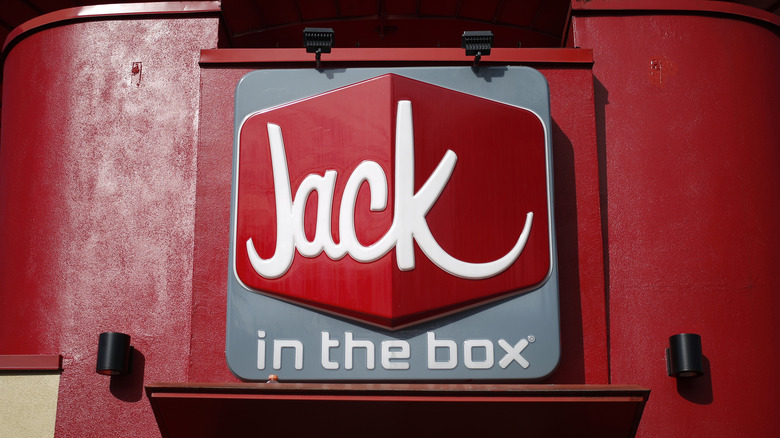The Real Reason Jack In The Box Nearly Went Bankrupt
Despite its reputation as being a bastion of creativity, the advertising industry is highly skilled at producing predictable results. Car commercials channel the supposed beating hearts of vehicles, perfume companies are gifted with immaculately tanned beauties diving into the sea, and fast food restaurants get a giant, terrifying clown head.
That's the preferred choice of Jack in the Box, anyway. It's a bizarre marketing technique, but it works — the Jack Box mascot is actually recognizable and memorable. It is also a fitting tribute to the chaotic history of the company.
Even though Jack in the Box has suffered crises, including economic misfortune in the 1970s and a failed up-market spin-off, perhaps its biggest disaster was an outbreak of E. Coli in 1993 (via The Daily Meal). The bacteria were found to have spread at 73 Jack in the Box restaurants across Washington, California, Idaho, and Nevada (via Food Safety News).
The E. Coli outbreak sickened hundreds of people and trashed Jack in the Box's reputation
According to the CDC, E. Coli is a group of bacteria naturally found in animals, people, and food. Certain strains have no negative impact on human health at all, but some can cause problems. Diarrhea is a common symptom of E. Coli infection, which can be spread through contaminated food and water.
An investigation into the 1993 spread of E. Coli discovered one theme the victims had in common: They had all eaten hamburgers from Jack in the Box (via The International Outbreak Museum). Symptoms became so severe that they included brain and kidney damage and hearing loss (via The Spokesman-Review). In total, over 600 people were infected and four children died (via PMC).
It was concluded that the huge scandal was caused by contaminated meat at slaughterhouses in the U.S. and Canada that was undercooked at Jack in the Box restaurants (via Food Safety News). Legal filings against the firm's owner, Foodmaker, revealed payouts of tens of millions of dollars, causing years of financial losses and near-bankruptcy — but forcing the company to overhaul its food safety standards (via Forbes).

